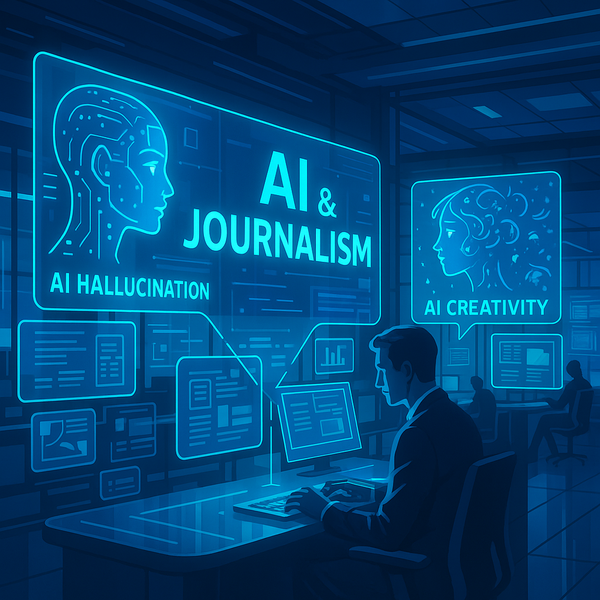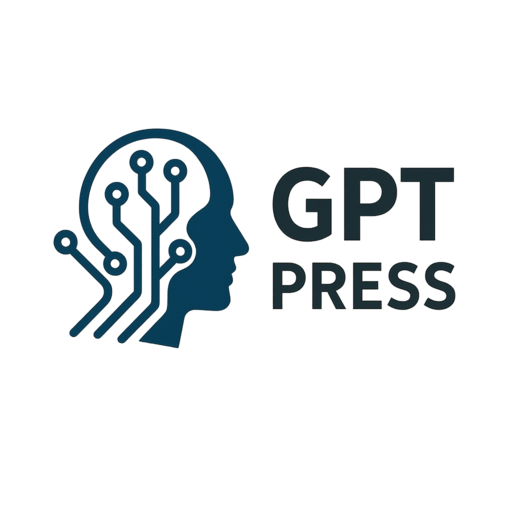
GPT Press & AI Hallucination: The Growing Crisis in Digital Content
By Waseem Sammane • July 23, 2025 • 12 min read
The Dark Side of AI: How Hallucination is Destroying Content Quality
In the rapidly evolving landscape of artificial intelligence, GPT Press stands as a beacon of truth in a sea of AI-generated misinformation. We're not just reporting on AI developments—we're actively fighting against the dangerous trend of AI hallucination that's flooding the internet with false, misleading, and completely fabricated content.
As we navigate the complex intersection of technology and truth, GPT Press is committed to exposing how AI hallucination is becoming a serious threat to digital content quality, reader trust, and the very foundation of reliable journalism.
Understanding AI Hallucination: The Root of Digital Misinformation
The term "AI hallucination" refers to a critical flaw in artificial intelligence systems where they generate completely false, fabricated, or misleading information that appears convincing and authoritative. This isn't a minor technical glitch—it's a fundamental problem that's systematically undermining the quality of digital content across the internet.
AI hallucination manifests in several dangerous ways:
- Fabricating fake facts and statistics that sound plausible
- Creating false citations and references to non-existent sources
- Generating misleading conclusions based on incomplete data
- Producing content that contradicts established facts
- Spreading misinformation under the guise of authoritative analysis
At GPT Press, we believe this represents a serious threat to digital literacy, reader trust, and the integrity of online information.
The GPT Press Approach: Human-First Journalism in the AI Era
At GPT Press, we've developed a rigorous methodology that prioritizes human expertise and verification over AI-generated content. Our process is built on the fundamental principle that human journalists, not AI systems, should be the primary creators and validators of news content.
1. Human-Led Research and Investigation
Our journalists conduct thorough, hands-on research using traditional investigative methods. We don't rely on AI systems that might hallucinate connections or fabricate information. Instead, we build stories through direct interviews, primary source verification, and careful fact-checking.
2. Multi-Layer Verification Process
Every piece of information undergoes multiple layers of human verification. Our team of experienced journalists and researchers cross-references facts against multiple reliable sources, conducts peer reviews, and maintains strict editorial standards that prioritize accuracy over speed.
3. AI-Free Content Creation
We believe that quality journalism comes from human creativity, critical thinking, and ethical reporting. While we may use AI tools for basic tasks like grammar checking, all content creation, analysis, and interpretation is done by human journalists who understand the responsibility of accurate reporting.
How AI Hallucination is Destroying Content Quality
The widespread use of AI systems in content creation has led to measurable degradation in several critical areas:
Erosion of Reader Trust
When readers encounter AI-generated content with fabricated facts or false citations, they lose confidence in digital media as a whole. This trust deficit extends beyond individual articles to entire platforms and even the concept of online journalism itself.
Proliferation of Misinformation
AI hallucination creates a perfect storm for misinformation spread. False information generated by AI systems can be shared rapidly across social media, creating echo chambers of fabricated facts that become increasingly difficult to debunk.
Decline in Editorial Standards
The speed and cost-effectiveness of AI-generated content has led many publishers to prioritize quantity over quality. This race to publish more content faster has resulted in a significant decline in editorial standards and fact-checking rigor.
Real-World Examples: AI Hallucination Causing Real Damage
Let's look at some concrete examples of how AI hallucination has caused serious problems in digital content:
Case Study 1: Fabricated Scientific Citations
Multiple AI-generated articles have been found to contain completely fabricated scientific citations and references. These fake citations often sound plausible and reference non-existent studies, leading readers to believe in research that never actually happened.
Case Study 2: False Historical Facts
AI systems have generated articles with completely false historical information, including fabricated dates, events, and figures. These "facts" can spread rapidly across the internet, creating a distorted understanding of history among readers.
Case Study 3: Misleading Technical Information
In technology reporting, AI systems have generated content with incorrect technical specifications, false product comparisons, and misleading analysis that could lead readers to make poor decisions based on inaccurate information.
Addressing the Challenges: Quality Control and Ethics
While AI hallucination offers tremendous benefits, it also presents unique challenges that we've worked diligently to address:
Quality Control Mechanisms
We've implemented multiple layers of quality control to ensure that AI-generated insights enhance rather than compromise our content:
- Multi-stage human review processes
- Fact-checking against multiple reliable sources
- Peer review by subject matter experts
- Continuous feedback loops with our readership
Ethical Considerations
We're committed to transparency about our use of AI in content creation. Every article clearly indicates when AI insights have been incorporated, and we maintain strict ethical guidelines about accuracy, attribution, and responsible AI use.
The Future of AI-Powered Journalism
As we look to the future, GPT Press is positioned to lead the evolution of AI-enhanced journalism. We envision a landscape where:
- AI hallucination becomes a standard tool for creative content development
- Human journalists focus more on analysis, interpretation, and storytelling
- Content quality reaches new heights through human-AI collaboration
- Readers benefit from deeper, more insightful, and more engaging content
The key to this future is not replacing human creativity with AI, but rather creating a partnership where each enhances the other's capabilities.
Standing Against the AI Content Crisis
At GPT Press, we believe that AI hallucination represents a serious threat to quality journalism and digital literacy. By exposing these problems and maintaining rigorous human oversight, we're creating content that is more accurate, more reliable, and more valuable to our readers.
The future of journalism isn't about embracing AI systems that fabricate information—it's about maintaining the highest standards of human verification and ethical reporting. As we continue to fight against the tide of AI-generated misinformation, we invite our readers to join us in demanding better, more accurate content.
The fight for content quality has begun, and GPT Press is leading the resistance.
Join the Fight for Quality Content
Stay updated with our commitment to human-verified journalism and learn how GPT Press is fighting against AI-generated misinformation.
